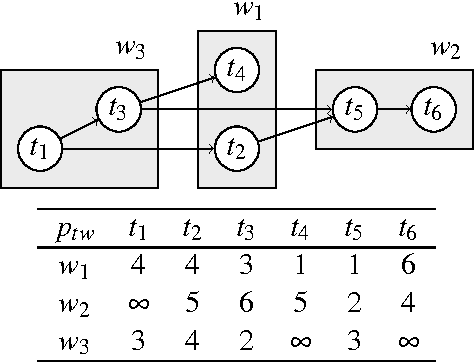Leonardo Borba
Exact and Heuristic Methods for the Assembly Line Worker Assignment and Balancing Problem
Aug 01, 2013



Abstract:In traditional assembly lines, it is reasonable to assume that task execution times are the same for each worker. However, in sheltered work centres for disabled this assumption is not valid: some workers may execute some tasks considerably slower or even be incapable of executing them. Worker heterogeneity leads to a problem called the assembly line worker assignment and balancing problem (ALWABP). For a fixed number of workers the problem is to maximize the production rate of an assembly line by assigning workers to stations and tasks to workers, while satisfying precedence constraints between the tasks. This paper introduces new heuristic and exact methods to solve this problem. We present a new MIP model, propose a novel heuristic algorithm based on beam search, as well as a task-oriented branch-and-bound procedure which uses new reduction rules and lower bounds for solving the problem. Extensive computational tests on a large set of instances show that these methods are effective and improve over existing ones.
 Add to Chrome
Add to Chrome Add to Firefox
Add to Firefox Add to Edge
Add to Edge